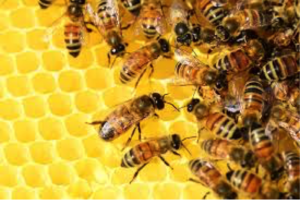
Colony Collapse Disorder (CCD) has been a thorn in the side of U.S. beekeepers for nearly a decade now. Unfortunately, research has been unable to pin down the exact cause of this devastating illness. While we understand more than we did a decade ago, the picture is still quite incomplete. As Jeff Pettis, research leader of the Bee Research Laboratory in Maryland, has put it, if CCD is a jigsaw puzzle, then we have the blue-sky pieces in place, but “no center picture.”
What We Know
We know that CCD claimed 30-90% of commercial honey bee hives in 2006, which marked the beginning of the problem (at least for modern beekeepers). There is some speculation that this may not be the first time that CCD has reared its head though. Large-scale colony losses also occurred in the 1880s, 1920s, and 1960s, but it isn’t clear if these were due to CCD or not. If previous collapses were due to CCD, then modern explanations that are currently lacking in significant support, like pesticide use and cellular phone interference, fall by the wayside.
The Bee Research Laboratory approaches CCD from four angles, focusing on pathogens, parasites, environmental stressors, and management stressors. The lab is certain that pathogens, even if they aren’t the sole cause of CCD, are an important factor. In particular, two viruses called acute bee paralysis virus and Kashmir bee virus, are always more abundant in CCD hives. These viruses reduce the ability of bees to synthesize certain proteins and make them more susceptible to additional stressors (e.g. nutrition issues, other pathogens, pesticides, etc.). Bees exposed to either virus are far more likely to die than healthy bees.
Pesticides, though often nominated as central causes of CCD, do not appear to be a major contributor. There has been no consistent pesticide-exposure pattern in bees with CCD, not even a consistent pattern in exposures to certain classes of pesticide. This doesn’t absolve pesticides of culpability though, as many researchers believe that they contribute to the problem (e.g. making bees more susceptible to pathogens) even if they don’t play a major role in CCD.
At this point, most researchers believe that the problem is likely multi-faceted and not due to a single agent. They also speculate that certain things, like pesticides, are probably not responsible for CCD on their own, but may increase hive susceptibility when combined with other factors. What follows is a summary of what is known regarding CCD causes. The most important factors are underlined.
Agents that probably contribute
Pathogens
- Acute bee paralysis virus
- Kashmir bee virus
- Deformed wing virus
- Black queen cell virus
Parasites
- Nosema fungus
- Varroa mites
Agents that possibly contribute
- Monoculture/Nutrition
- Transportation stress
- Pesticides
Agents unlikely to contribute
- Genetically modified crops
- High fructose corn syrup
- Global climate change
- Ozone
- Cellular phones/towers
Emerging Research
One new angle that researchers are actively investigating is nutrition. While wild honey bees are free to forage for food, commercial bees are generally limited to one crop at a time. This monoculture approach may, in fact, lead to nutritional deficiencies that stress bee immune systems. A 2015 paper in Apdiologie found that honey bees that fed on natural forage had higher overwinter survival rates. Nutrition, it seems, may turn out to be more important than pesticides in terms of overall honeybee health.
Future Directions
The CCD problem is not currently at a critical level. Rates of loss have dropped to about one-third of colonies per year which, while not commercially viable, does not threaten the honeybee species. Ongoing research continues to reveal ways to manage the problem and will, hopefully, have more solutions to offer in the near future.
Resources
https://link.springer.com
http://www.ars.usda.gov
http://agresearchmag.ars.usda.gov
